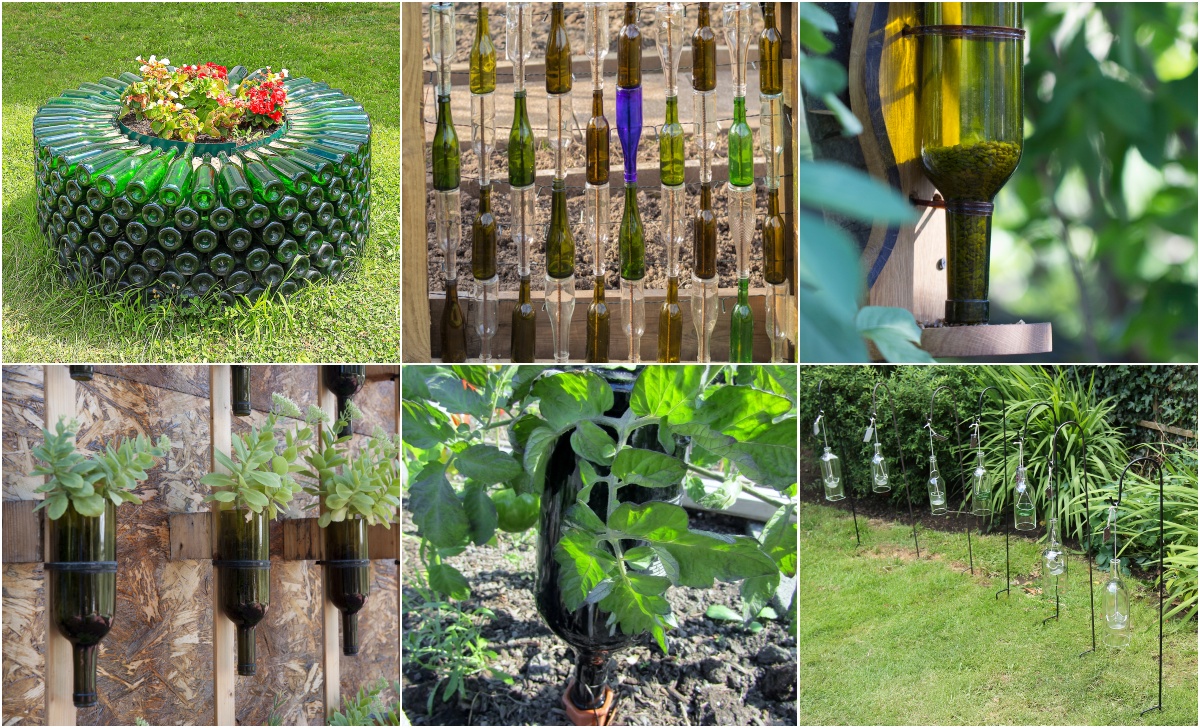
One of the great things about having a garden is that you can find a range of ways to reuse things that might otherwise be thrown away. Glass bottles are one excellent example. There are a surprising number of ways that you can reuse glass bottles in your garden.
Of course, glass bottles can be recycled. They might be collected from the kerb where you live. You might have to take them to a local recycling point or recycling centre. Sometimes, they can even be returned to the store.
But however we recycle glass bottles, the processes involved do require energy, water and other resources. Think about the transportation required to take them for processing. And the power required for sorting and processing the materials.
Before you send glass bottles for recycling, think about how you might be able to reuse them around your home.
That could be the greenest and most sustainable option of all.
What is more, by using glass bottles again, you will not only give them a new lease of life. You can also reduce the quantity of new materials or number of new items that you buy.
Glass bottles can be truly beautiful too. You will be amazed by some of the beautiful structures and objects you can create with this ‘waste’ product.
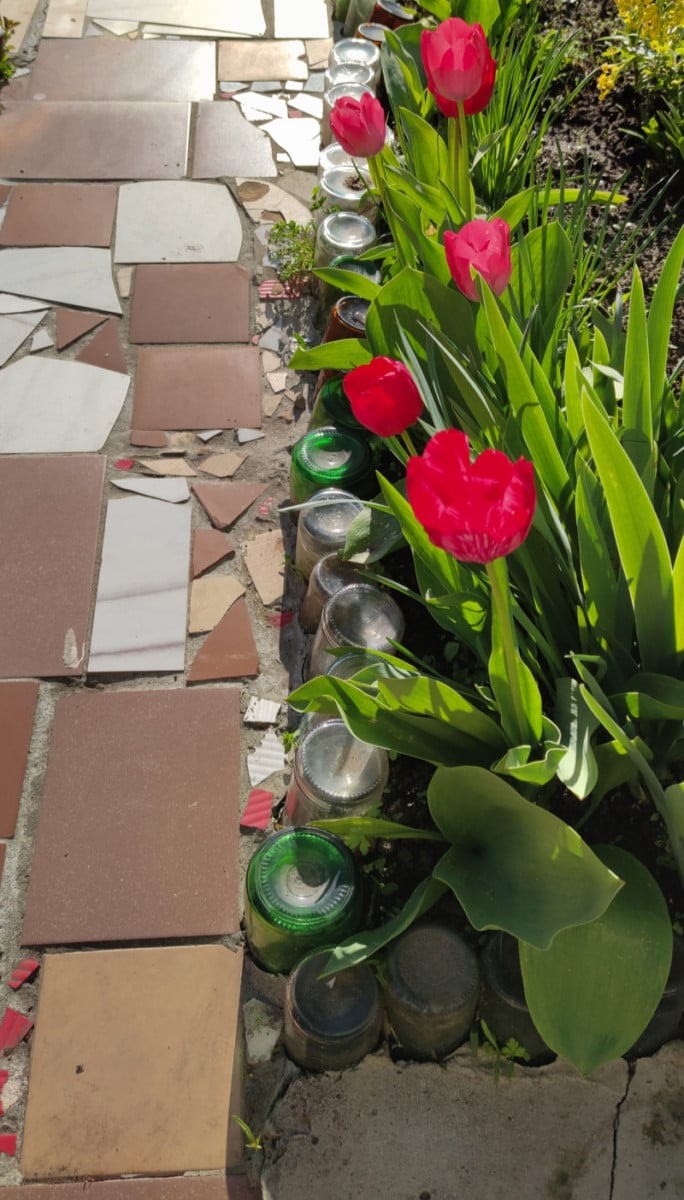
One of the simplest ways to use glass bottles in garden design is to make path edging. You can use a wide range of different bottles to create different effects, to mark the place where your growing area ends and your path begins.
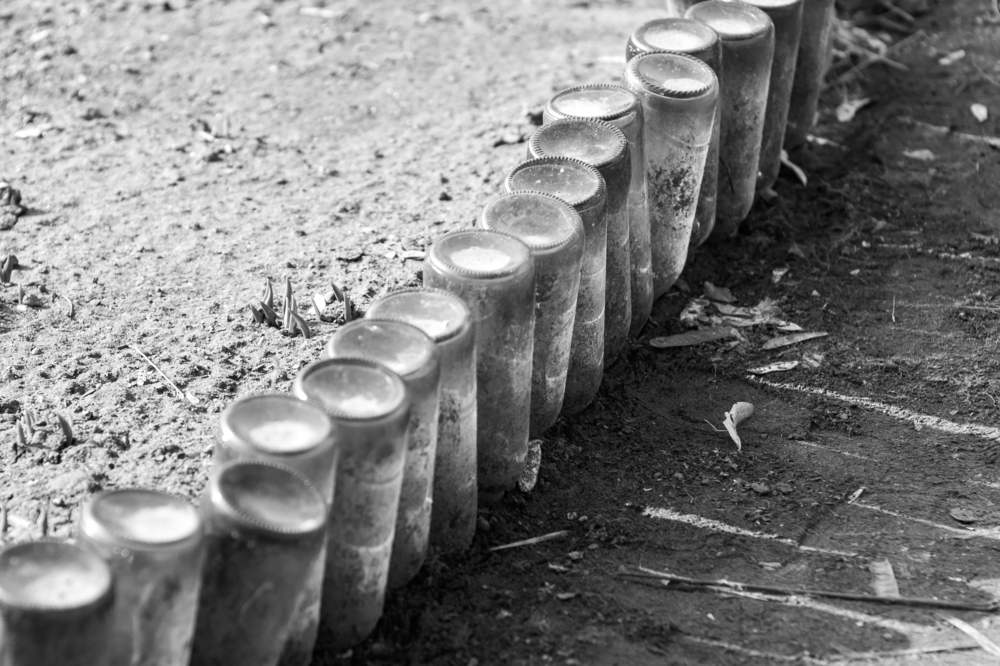
To create this effect:
- Mark out the location for your new edging.
- Dig a narrow trench that is deep enough to allow bottles to protrude to the required height.
- Place the bottles (with their lids on to prevent slug or beetle egress) into the trench.
- Fill in and tamp down the soil around your bottles to hold them firmly in place.
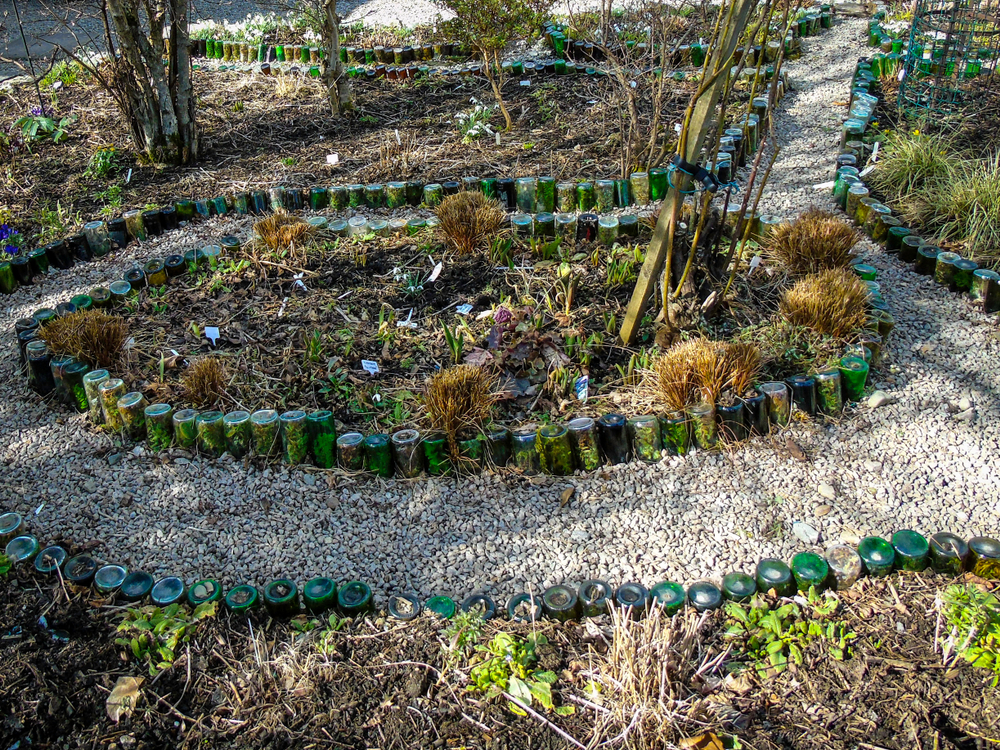
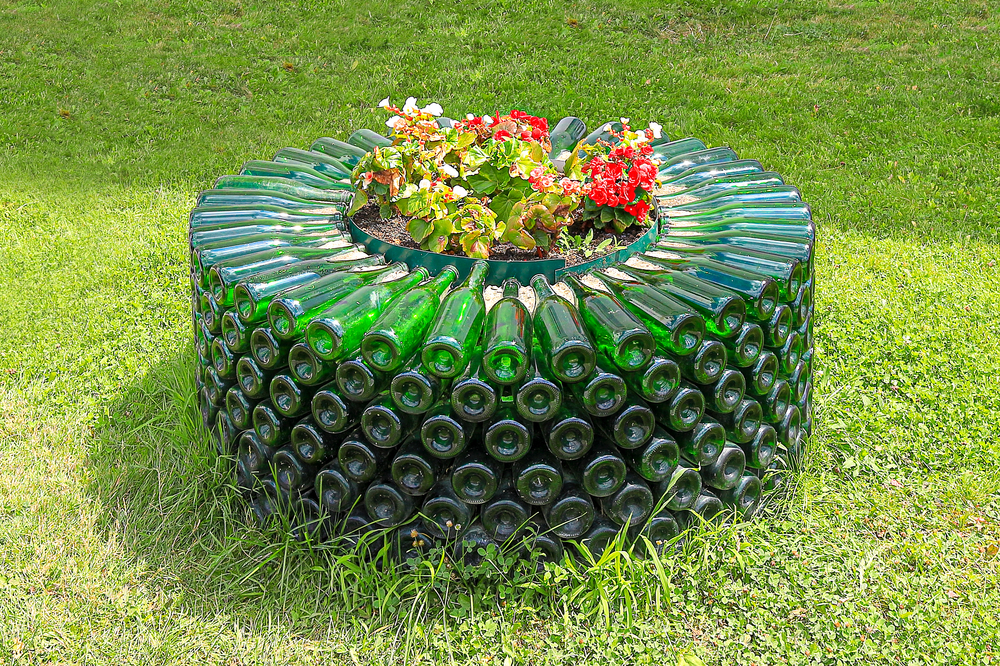
If you want to make higher garden beds, you can also consider using glass bottles to form higher walls by simply stacking them on their sides. The soil/ growing medium behind them helps to hold them in place.
The glass bottle walls could also be mortared into place to create stronger and higher retaining walls to hold back a slope or edge a higher raised bed.
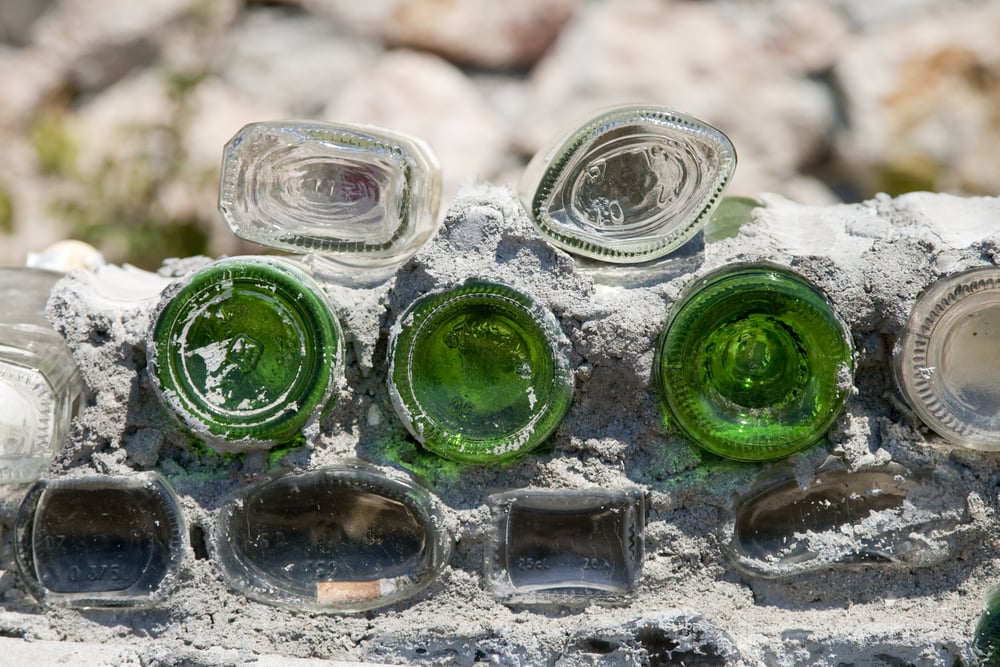
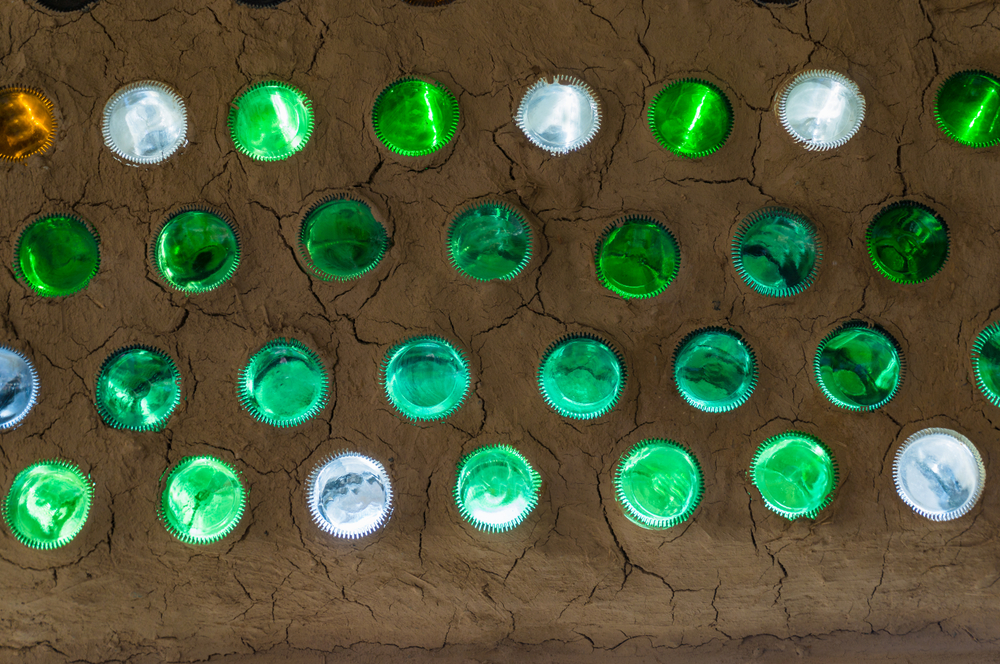
Glass bottles can also be inserted into cob or adobe walls for decorative effect. Cob or adobe walls could be used to mark the boundaries of a property, to demarcate different garden zones, or to ring a raised bed or other growing area.
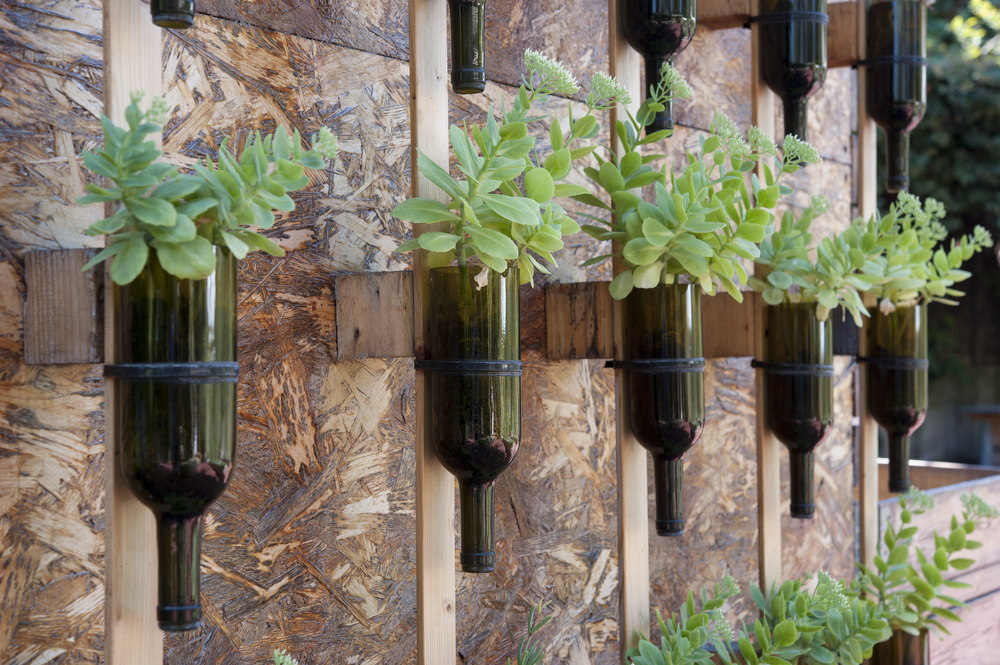
Cut the bottom off glass bottles, turn upside down and attach to a fence or wall for a quick and easy vertical garden.
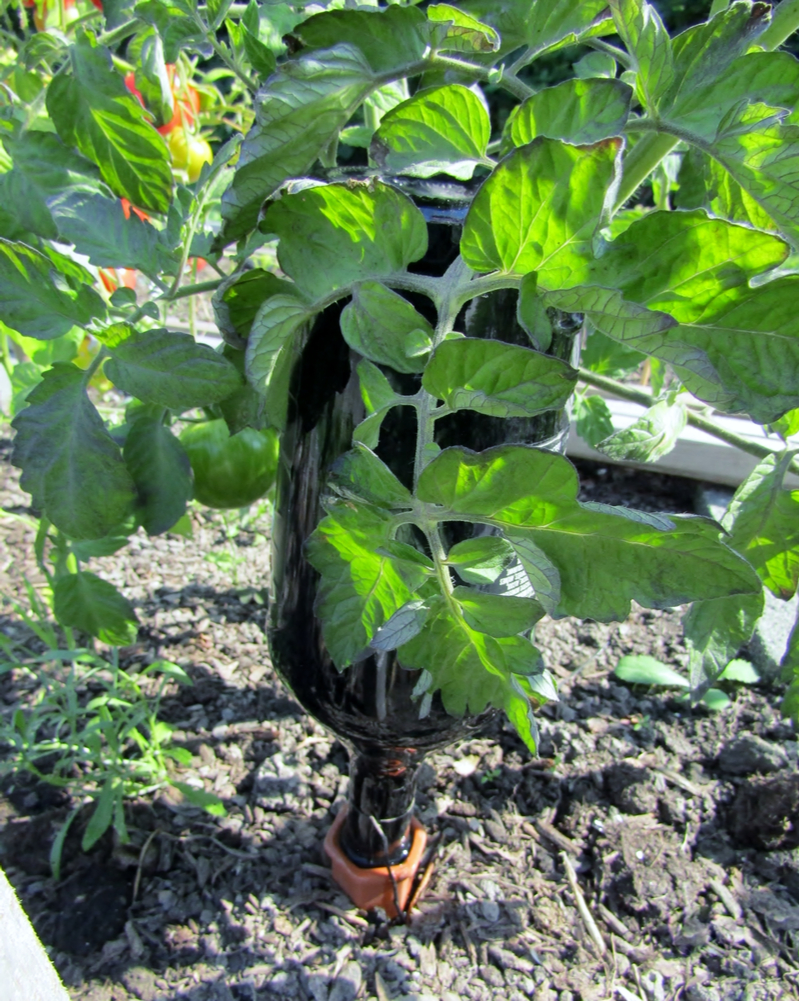
Poke a hole in a glass bottle lid and fill the bottle with water. Secure the lid back on and turn the bottle upside with the lid and neck of the bottle buried a few inches below the soil line.
The water will gradually drip out and provide your indoor or outdoor plants with a consistent supply of water.
This is a great trick to use if you are heading on vacation or leaving your garden for an extended period of time.
Taking this idea a little further, you could also use glass bottles inserted in walls of cob or adobe, or mortared together to create a range of garden buildings.
The glass bottle shed at the link below is one great example:
Glass Bottle Shed @ flickr.com.
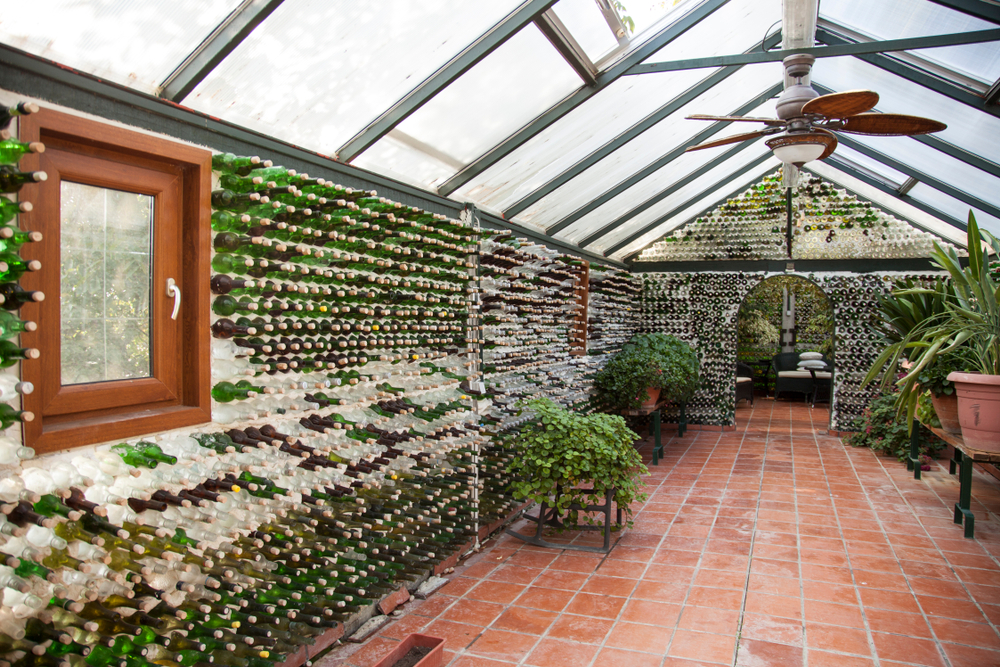
Glass bottles could also be used to create an undercover growing area. Read about plans for a glass bottle greenhouse at the link below.
Glass Bottle Greenhouse @ blog.jacksonandperkins.com.
A cold frame is another garden structure that you could consider making with old glass bottles. Such a structure is a great solution for cool climate gardeners. It can help you to get started earlier with the gardening year.
Beer Bottle Cold Frame @ steemit.com.
How about using glass bottles to form the base of a garden bar, or the countertop for an outdoors kitchen? This technique can be an affordable and eco-friendly way to get the outdoors space you’ve always dreamed of. You could mortar bottles in, set them in cob or adobe, or keep things simple as in the example below.
Glass Bottle Bar @ permaculture.co.uk.
Speaking of outdoors kitchens, you can also reuse glass bottles to fill a base for an outdoors oven. A wood-fired oven will dramatically increase the number of meals you can cook outdoors. You can make pizzas from your home-grown produce, for example. The glass bottles, surrounded by sand, are used for their insulating properties.
Wood Fired Clay Pizza Oven Build @ instructables.com.
Another quirky yet simple idea involves using some glass bottles as the legs for a coffee table. Simply cut some holes in a piece of wood to form the top of the table, just wide enough for the bottle necks to pass through. Then pop the wood down on top of the bottle legs for a cool and interesting coffee table for an outdoors seating area.
DIY Inspiration Wine Bottle Coffee Table @ curbly.com.
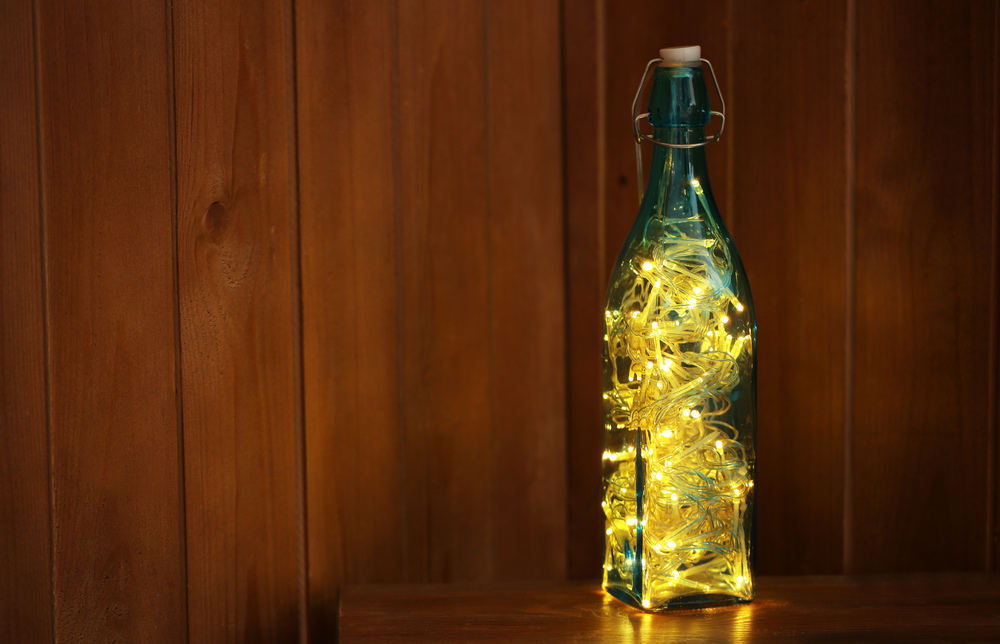
You can also make use of glass bottles to make attractive lighting for your garden or an outdoors dining or seating area.
One simple idea involves stringing up glass bottles with a string of fairy lights tucked into each one. Bear in mind that you could choose solar fairy lights, for an eco-friendly, off-grid option.
Of course, you can also make plenty of other lights by placing LED lights inside old glass bottles. You could even make a glass bottle chandelier.
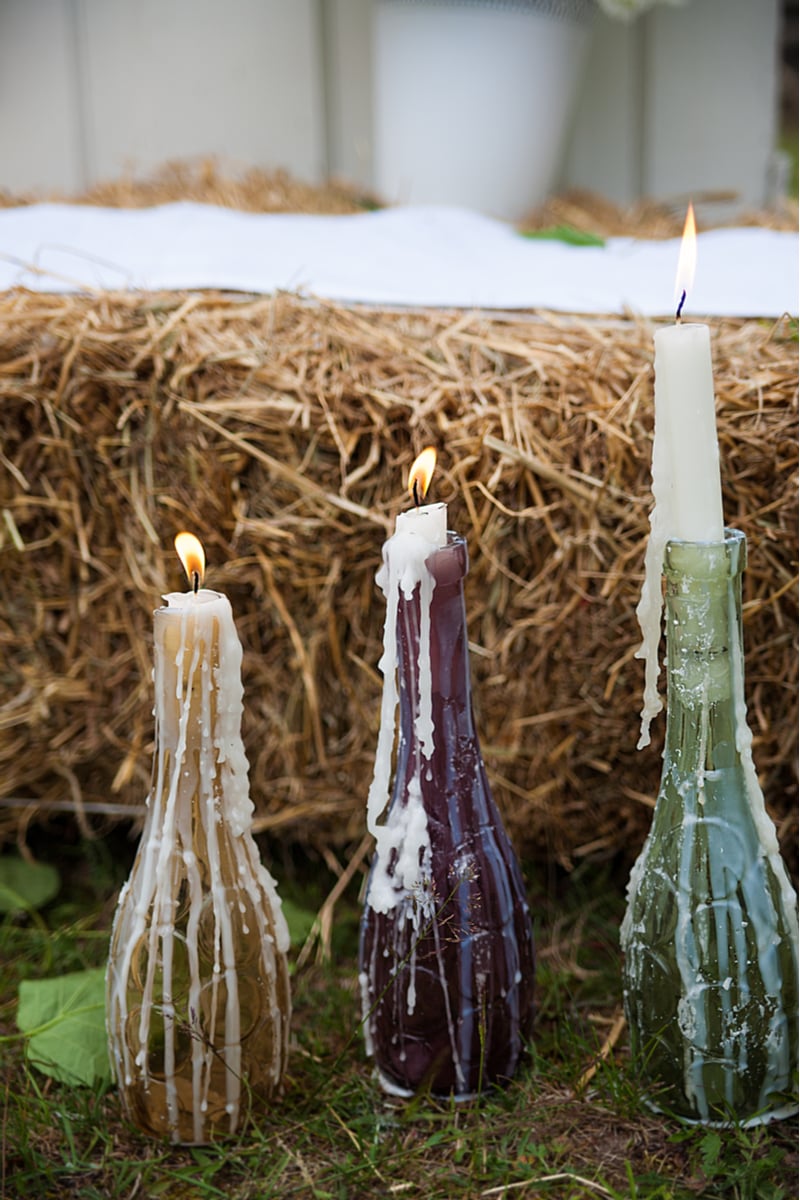
For more rustic lighting to enjoy in your garden, or inside your home, after dark – use glass bottles as simple candle holders. Glass bottles make perfect, rustic candle holders for your homemade beeswax candles, or eco-friendly candles you’ve bought online or at a store.
Here is one decorative idea to consider:
How To Make Glass Bottle Candle Holders @ apartmenttherapy.com.
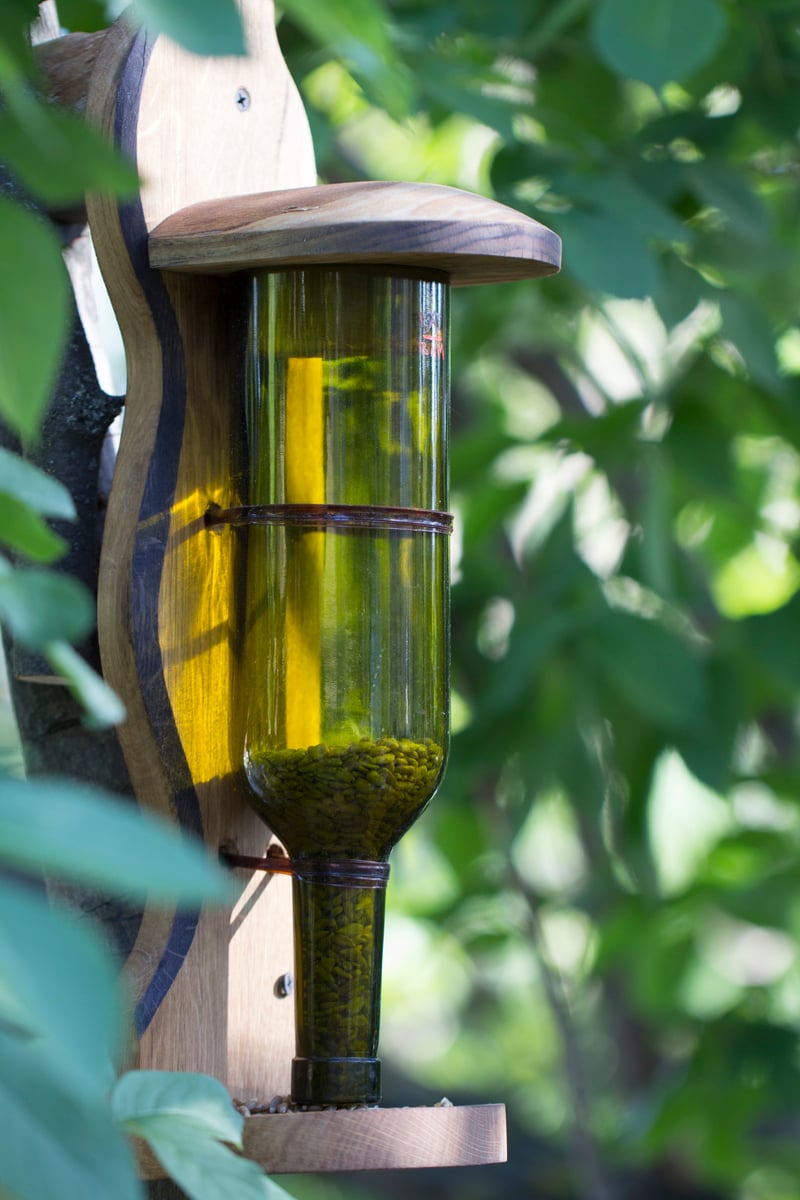
Glass bottles can also be used to help garden wildlife. For example, you could consider making a glass bottle bird feeder. Some examples of such a project can be found by following the link below.
Glass Bottle Bird Feeders @ balconygardenweb.com.
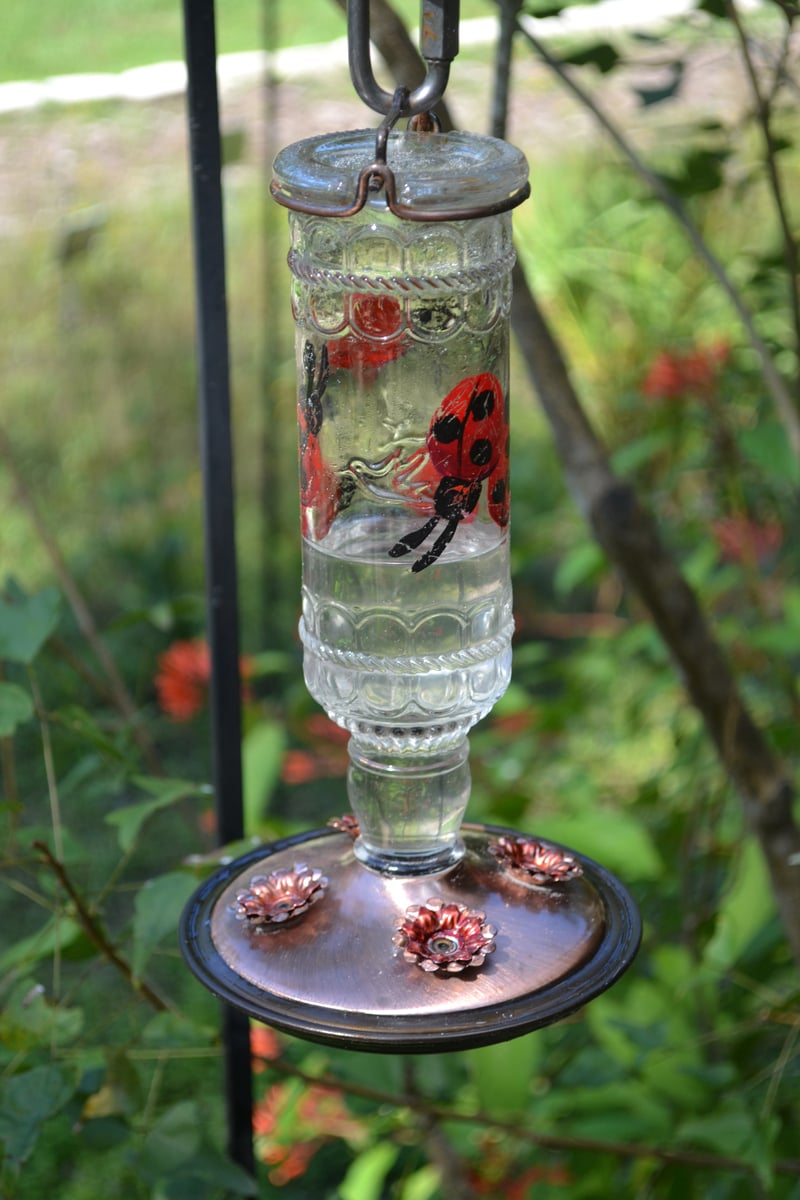
You can also use a glass bottle to create a simple humming bird feeder. This will let you feed hummingbirds in particular, as well as other birds you might find in your garden.
Glass Bottle Hummingbird Feeder @ instructables.com.
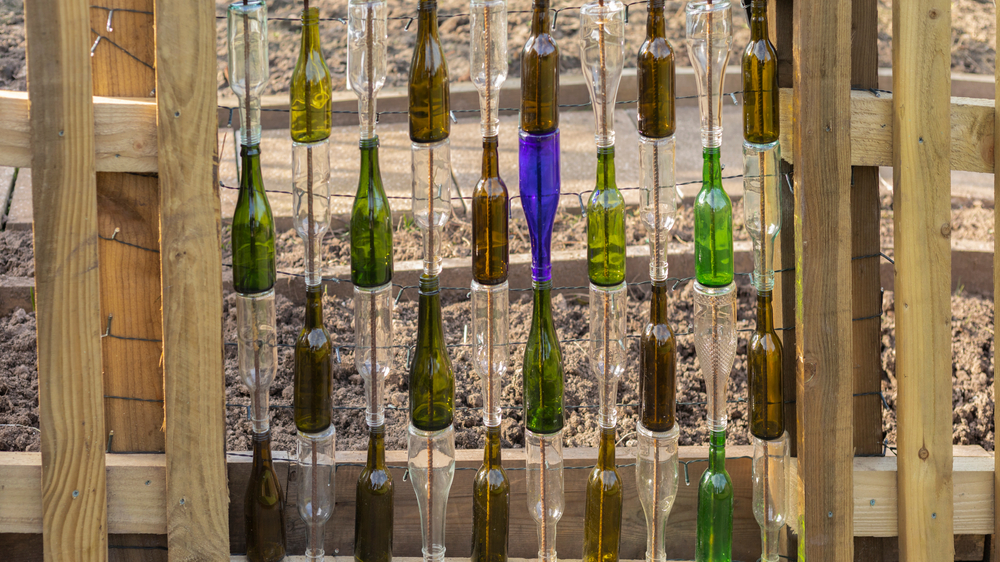
By cutting a hole in the base of each glass bottle, you can allow them to be placed onto wooden or metal dowels. This can allow you to build them up into a fence or privacy screen for your property.
Glass Bottle Fence @ goodhomesdesign.com.
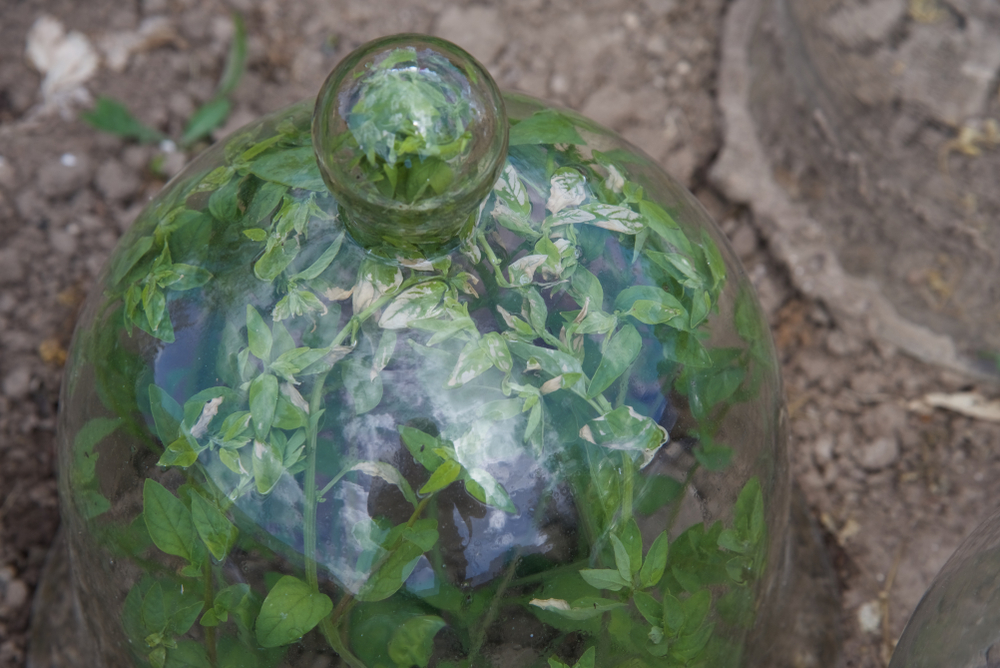
By cutting the bottom off larger glass bottles, you could consider using them as individual cloches to protect individual seedlings or small plants in your vegetable garden.
Small cloches like these might be helpful, for example, to protect seedlings from mice in early spring. Glass cloches will stay in place more effectively than plastic ones (especially in windy conditions).
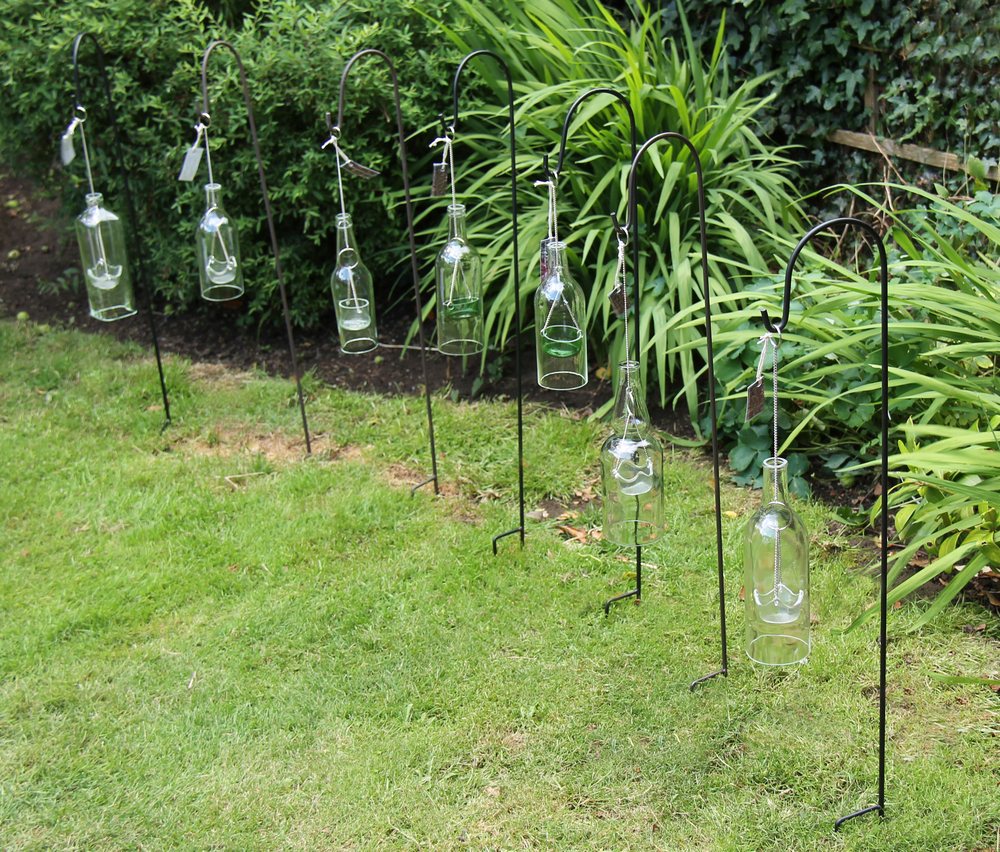
Those mini cloches could also make good candle lanterns. With their open bases, they can be placed over candles of all sorts of shapes and sizes.
DIY bottle lantern – candle holder @ youtube.com.
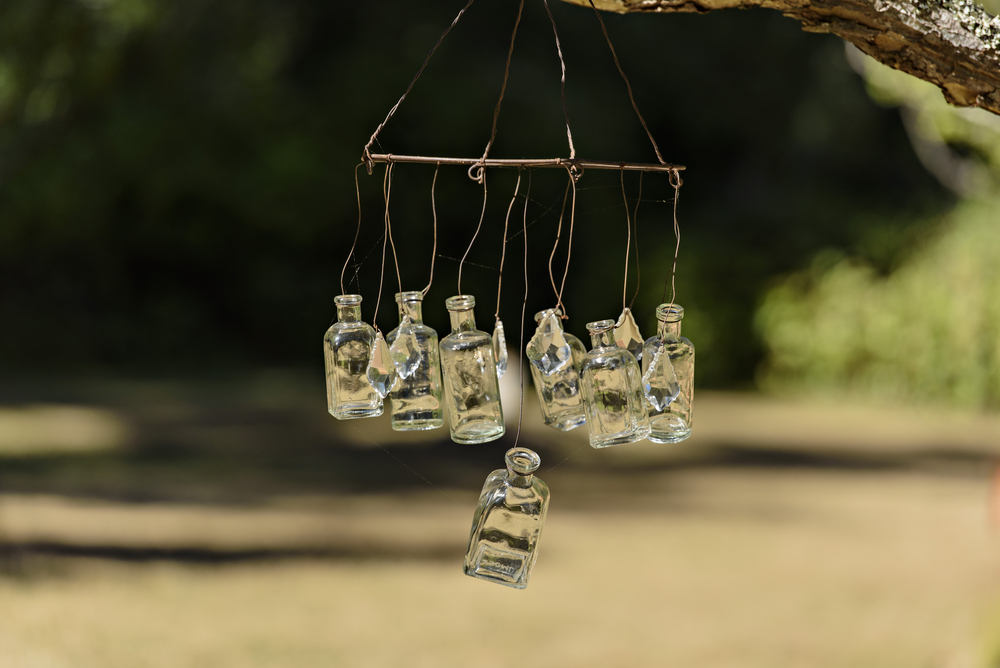
Glass bottles can also be altered to make a range of different wind chime designs. Wind chimes can be wonderful for adding to the natural soundscape in your garden.
Remember, a garden should please all the senses – not just be visually appealing.
DIY Glass Bottle Wind Chimes @ homedit.com.
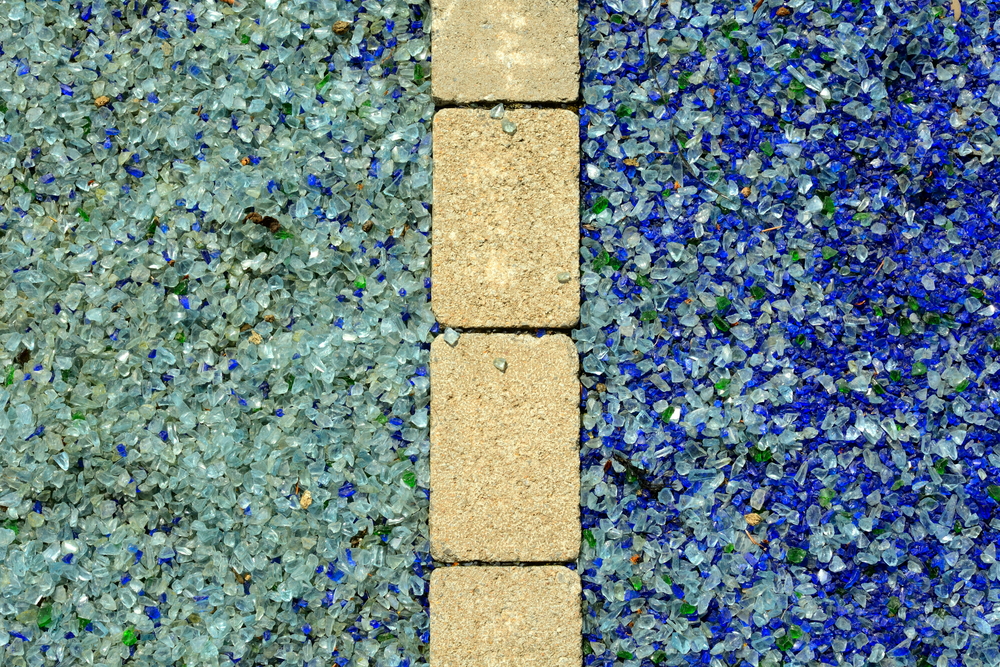
Finally, even broken pieces from old glass bottles could be put to good use. Small pieces of glass can be carefully ground down to create glass pebbles (like naturally created sea glass) that can be used in a range of ways in your garden.
You can use broken glass fragments or glass pebbles to make mosaic pathways, paved areas, inset garden edging and more.
Even when broken, glass bottles can still come in handy in your garden.


